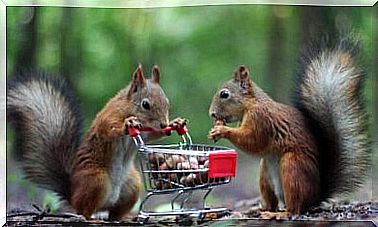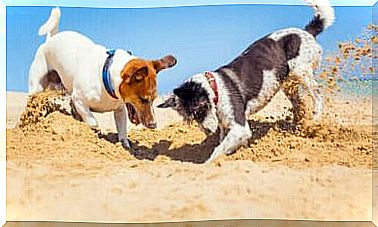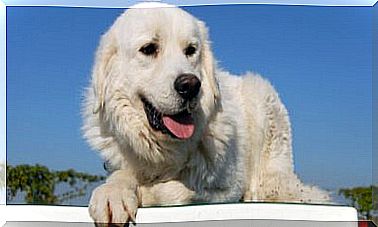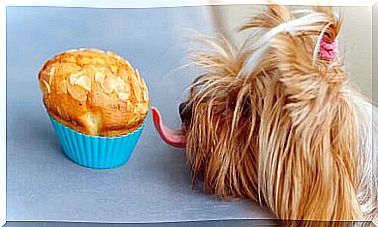Black Bear: The ‘Owner’ Of North America

When we are told that there are bears in North America, we imagine the famous grizzly bear, but the truth is that the grizzly doesn’t live there. The ‘owner’ of the region is the black bear. We’ll tell you all about it in the following article.
Characteristics and Habitat of the American Black Bear
This carnivorous mammal is the most common in North America and can be found from Canada and Alaska to Mexico.
He prefers forests and mountains, where he can find good food and hide in caves and among trees.
As the name suggests, the black bear has dark fur on most of its body, except on its muzzle, which is brown or reddish.
Some specimens may have brown, cinnamon or chocolate fur, especially those that live in the Western United States.
We can find populations of up to 500 individuals in various national parks, such as Yosemite, Yellowstone or the Great Smoky Mountains.
Every year, it sheds its fur and its thick skin protects it from insect bites.
It can measure up to two meters in length and weigh about 150 kilos on average, although females are smaller and thinner than males.

His eyes are small and his eyesight is not very good, although he can distinguish colors, while both his sense of smell and his ear are well developed.
Its long snout allows it to get food among the trees, leaves and branches.
Habits, feeding and reproduction of the black bear
Unlike other bears, the American black bear does not hibernate ‘hard’; but it remains in a state of drowsiness through the winter, while surviving on the fat it accumulated in the fall.
He can eat 20,000 calories and drink several liters of water a day before hiding in his cave!
When the cold months are over, he heads to the valleys and mid-altitudes to access the sun’s light and warmth. As summer progresses, choose forests where you can protect yourself from the high temperatures.
As for his diet, he is omnivorous, although he mainly eats vegetables, berries, acorns, grams, fruits and herbs. It also consumes ants, termites, bees or wasps, which it detects and captures with its long snout.
He is a big fan of honey and, during the summer, he approaches the rivers to hunt salmon in mid-air. This bear is also a great swimmer and can climb trees with impressive agility.
Thus, he escapes from dangers, mainly from hunters. In addition, it has the ability to walk on its two hind legs or sit on a rock, log or stone to rest.

reproduction
The black bear is alone most of the year, with the exception of sporadic encounters in areas with abundant feeding, during heat and reproduction. The mother takes care of the puppies (the male does not participate in the task).
Mating takes place between May and June, and gestation lasts about seven months, but does not start right after copulation.
Females perform a late implant of the egg so that births take place in the fall.
Each litter is composed of one or two puppies, which are born hairless, blind and weighing about 350 grams.
The mother breastfeeds them for eight months and, from then on, they leave the den to learn how to hunt, get a good den and escape from predators (among them the wolf, the puma and the brown bear).
They leave the mother a year and a half later, or after they have “attached” all the maternal lessons, on which their survival will depend.









